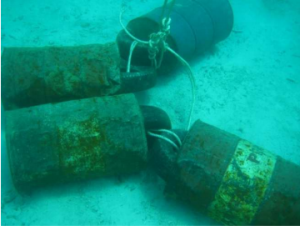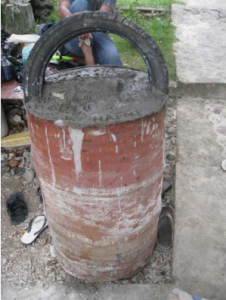This project was done by students from the University of Syiah Kuala, the largest university in Aceh, and involves collaborating with the local community in Iboih to come up with solutions for coral reef preservation.
The students held a stakeholder meeting so that the causes, and subsequently the solutions, can be discussed. The stakeholders comprised of representatives from the fishing community, the tourism industry and beach-side bungalow owners. Below is a summary of the causes of coral reef damage from each group.
All
- Every stakeholder was unaware of the important role that coral reefs play in maintaining the fishing resources
- Boats often caused damaged to reefs when they anchor over an area of corals. Oil waste from boats also contribute to degradation
Fishing
- Fishermen would lay their fishing nets over coral reefs as they did not know that this is practice is very harmful to the habitat
Tourism
- The lack of knowledge by tourists often resulted in them touching or accidently stepping over coral reefs
- Tourists would also throw rubbish at the beach due to a lack of trash cans
Residential
- There is a lack of ash cans and this meant that unburnt rubbish would be scattered by the wind and pollute the coasts and sea
- People living near coastal areas would dispose of the liquid wastes, such as washing liquids, carelessly and this directly enters into the sea
Solutions
Coral Education to the Community
The biggest factor to the lack of environmentalism in Iboih is the lack of knowledge towards the environment. Hence, an education programme was launched to tackle this issue. This programme was conducted by ‘conscripting’ final-year biology students of University of Syiah Kuala. The different stakeholders as well as members of the community were invited to these informal lessons. This programme gave the opportunity for the residents of Iboih to better understand coral reef ecology and biology. Those who attended were pleased with the programme and suggested that it be an annual affair. They became more cognizant of the importance of ecology and this translated in real actions such as the proper disposal of waste and stopping fishing over coral reefs.
Installing Mooring Buoys

Anchor-related damage to reefs was reduced by installing mooring buoys. A Mooring buoy is an object that floats in water and is used in the middle of the seas as locators or as warning points for the ships. Ships can be secure, or moored, to these buoys instead of casting down their anchor.
The mooring buoys on the coasts of Iboih were installed in areas where there were no coral reefs. Thus tourist and fishing boats were able to be secured without making contact with the sea bed and coral reefs.
This measure is largely successful and its success, and the pictures shown, are documented in this journal article:
Umam, A. H., Maryanto, S. D., Frediansyah, A., Shalihatunnisa, M., Izzati, R., Hulwani, Y. R., & Handayani, M. T. Sustainable Coral Reefs Conservation After Tsunami with Mooring Buoy Installation in Weh Island, Aceh.
This community-driven conservation effort is documented in this scholarly article:
Nasir, Muhammad, and Jl Syech Abdur Rauf No. “Community-driven coral conservation in Aceh, Indonesia.”
http://www.rufford.org/rsg/projects/muhammad_nasir